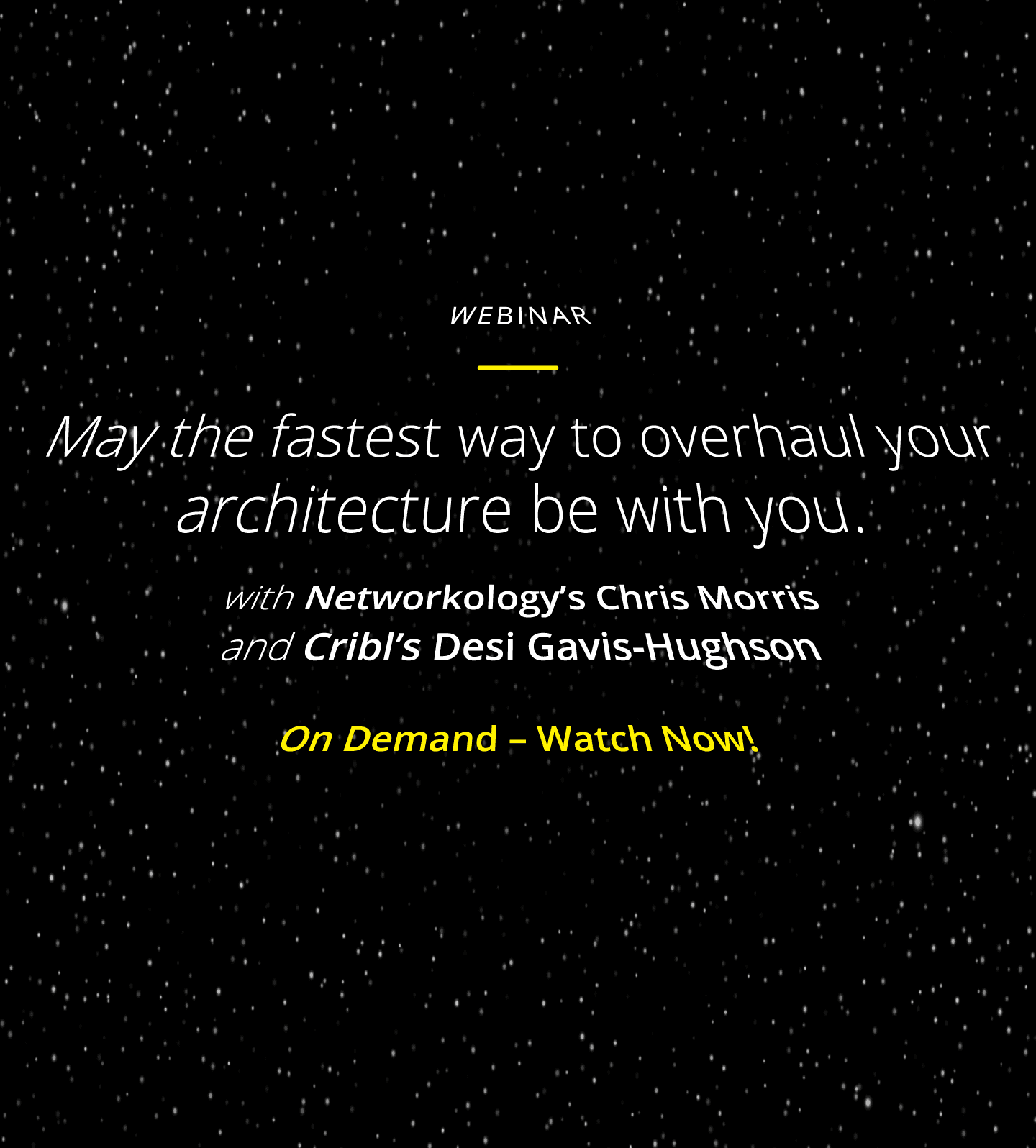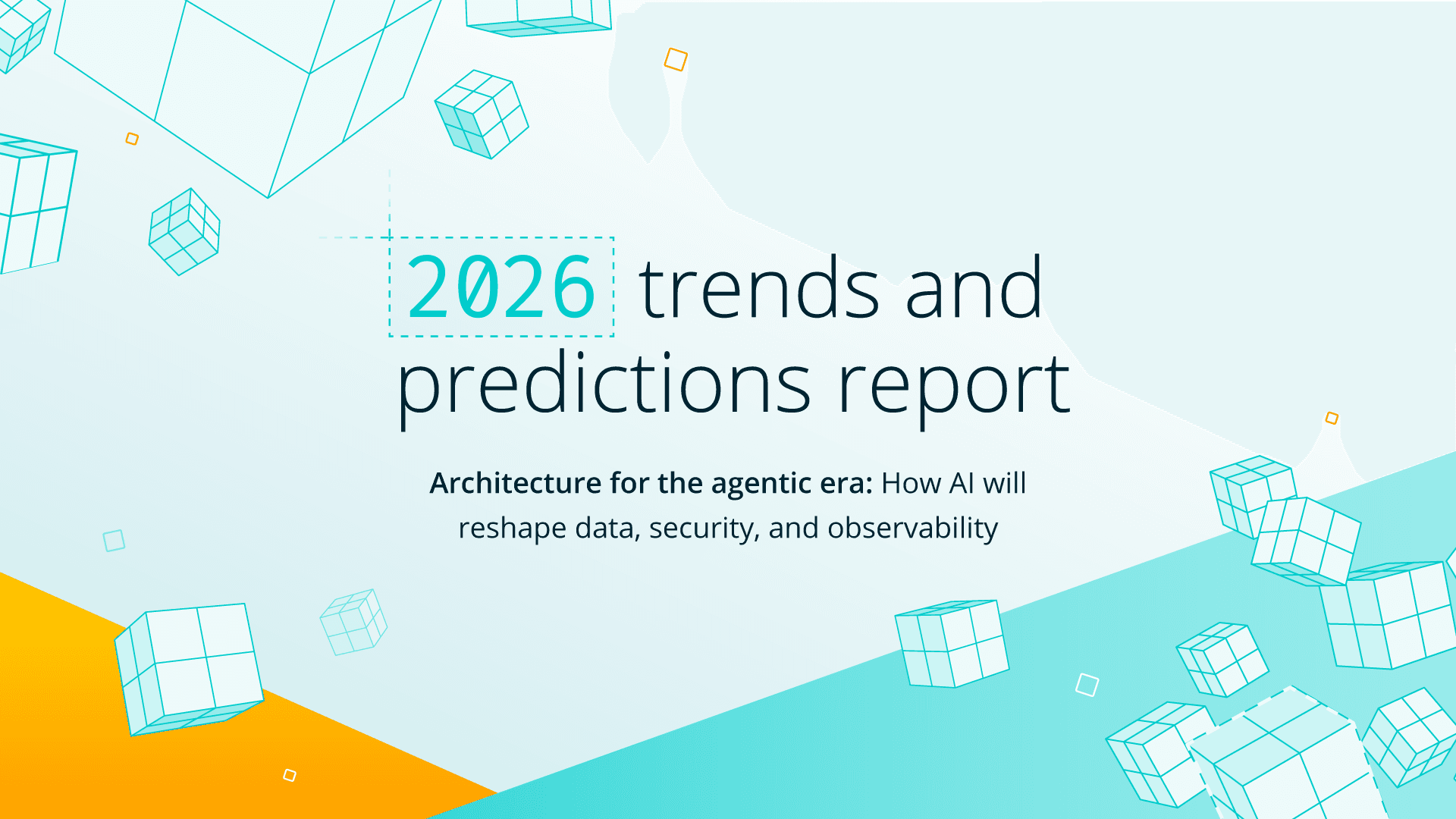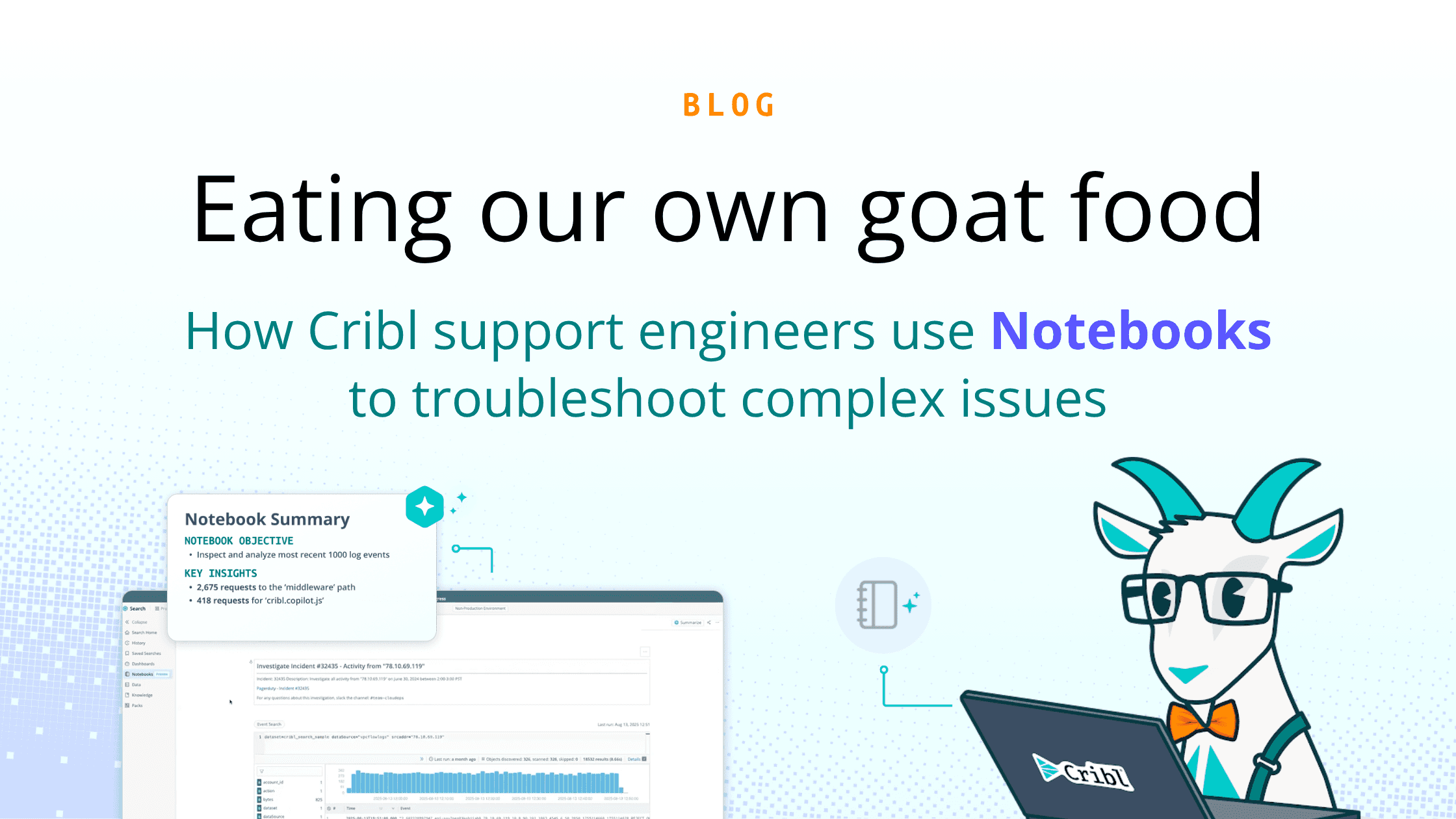Last week, we hosted a webinar on the easiest way to right-size – and safest way to overhaul – your architecture.
One of the scenarios we’re seeing come up more and more with prospects and customers is the need to update your architecture, and particularly your security architecture, as new needs and threats arise. As I’m sure you all know, that can be a real hassle, put a strain on your resources, and put your security posture at risk if it isn’t done well.
An observability pipeline like Cribl Stream gives teams the flexibility to implement the best architecture for their organization, even as the company’s goals change.
For those of you who couldn’t make it, I’ll walk through some of the highlights of the conversation and share polling results from the webinar. You can also view the recording here.
Webinar Highlights and Data
Everyone’s architecture tends to look a little different because different teams have different goals. Similarly, enterprise architecture can be led by different groups in the enterprise.
I asked our attendees who leads enterprise architecture at their organizations. We offered four options:
Security team
IT team
Other business unit
External party/consultant
I thought we’d see mostly security teams leading architecture, but ya know, can’t win ‘em all.
Figure 1: Who leads enterprise architecture in your organization?
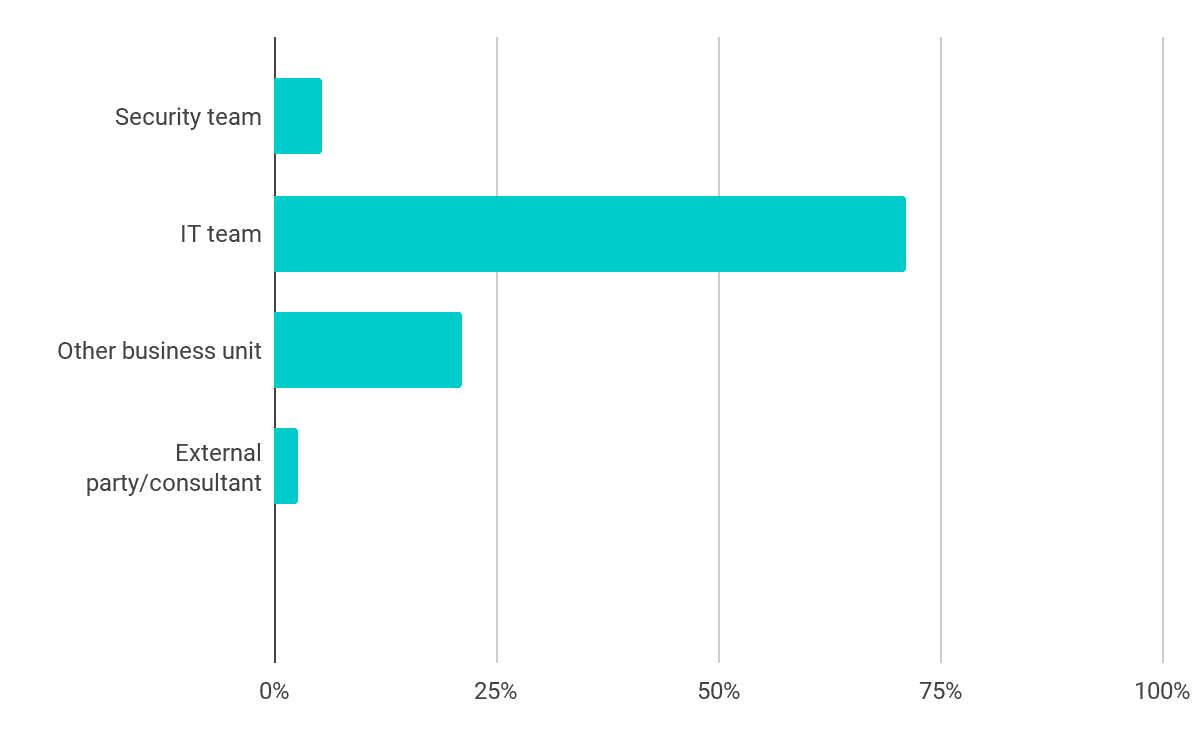
Next, we walked through the elements of a solid enterprise architecture. To totally simplify it, you want to start with your enterprise goals, and establish your objectives from there. Remember, the best architectures are designed with business goals in mind.
After that, you want to determine your approach, build out a more specific architecture plan, and decide on a framework that fits your business goals. Just like property architects have guidelines they need to work within, so do enterprise architects.
Lastly, and I personally think this is the most important step, you need to review and revise your architecture. To do that effectively, you need to reference the latest goals for your enterprise – so it all comes full circle.
The problem is: Business goals shift over time. When your enterprise goals change or you’ve inherited legacy architecture based on old targets, issues can pop up.
We polled the group on which issues they’re experiencing with their current architectures, and unsurprisingly, most folks on the call said their primary issue was – you guessed it – that their current architecture was not meeting their business goals.
Figure 2: Which issues are you experiencing with your architecture today?
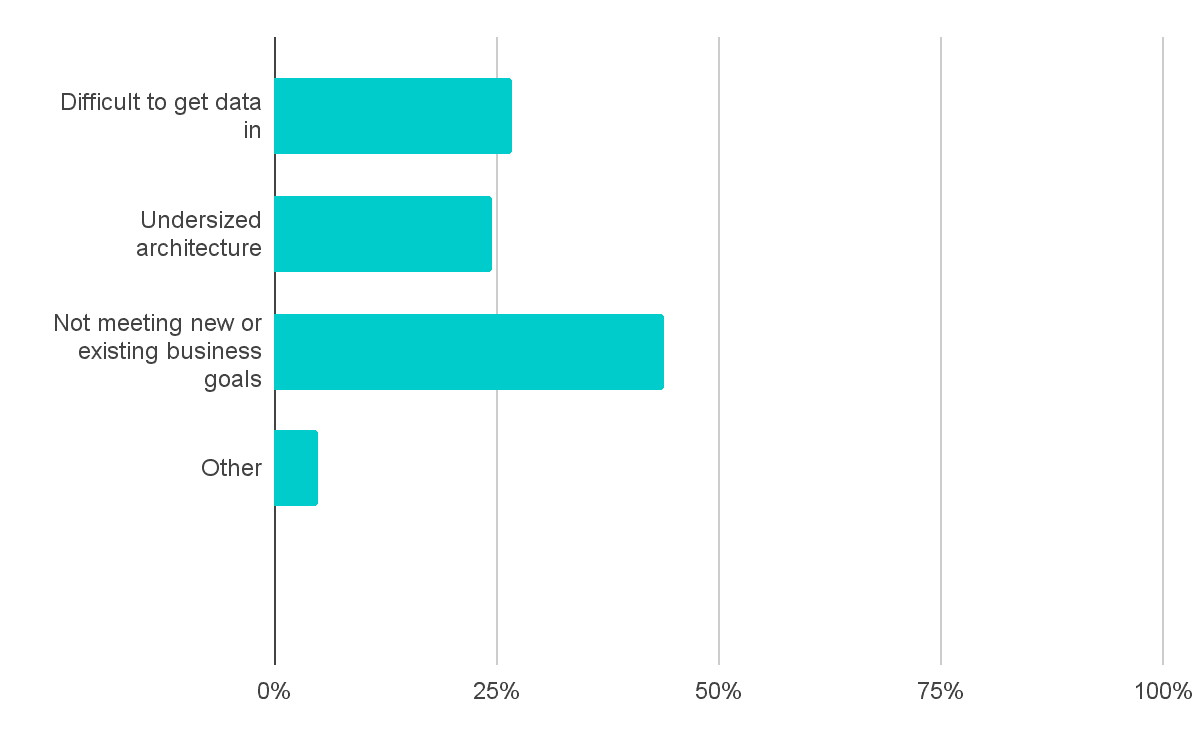
Building good architecture is a never-ending journey, and it often means compromise. You end up playing a three-way tug of war between:
Cost: What it’s going to cost to implement this architecture and keep it in place?
Flexibility: As the goals of the enterprise shift, will I have the flexibility to overhaul my architecture?
Control: Do I have true control over the data? Am I properly set up to review and revise what I’ve put in place?
But it doesn’t have to.
We recommend you implement a vendor-agnostic observability pipeline as part of your architecture framework for maximum flexibility. That way, you always have the flexibility to overhaul your architecture, access to the data you need to right-size new architecture, and the ability to revise a legacy setup.
You might also work with a partner, like a professional services team or an outside consultant, to figure out the best path forward.
Figure 3: Where are you in your architecture journey?
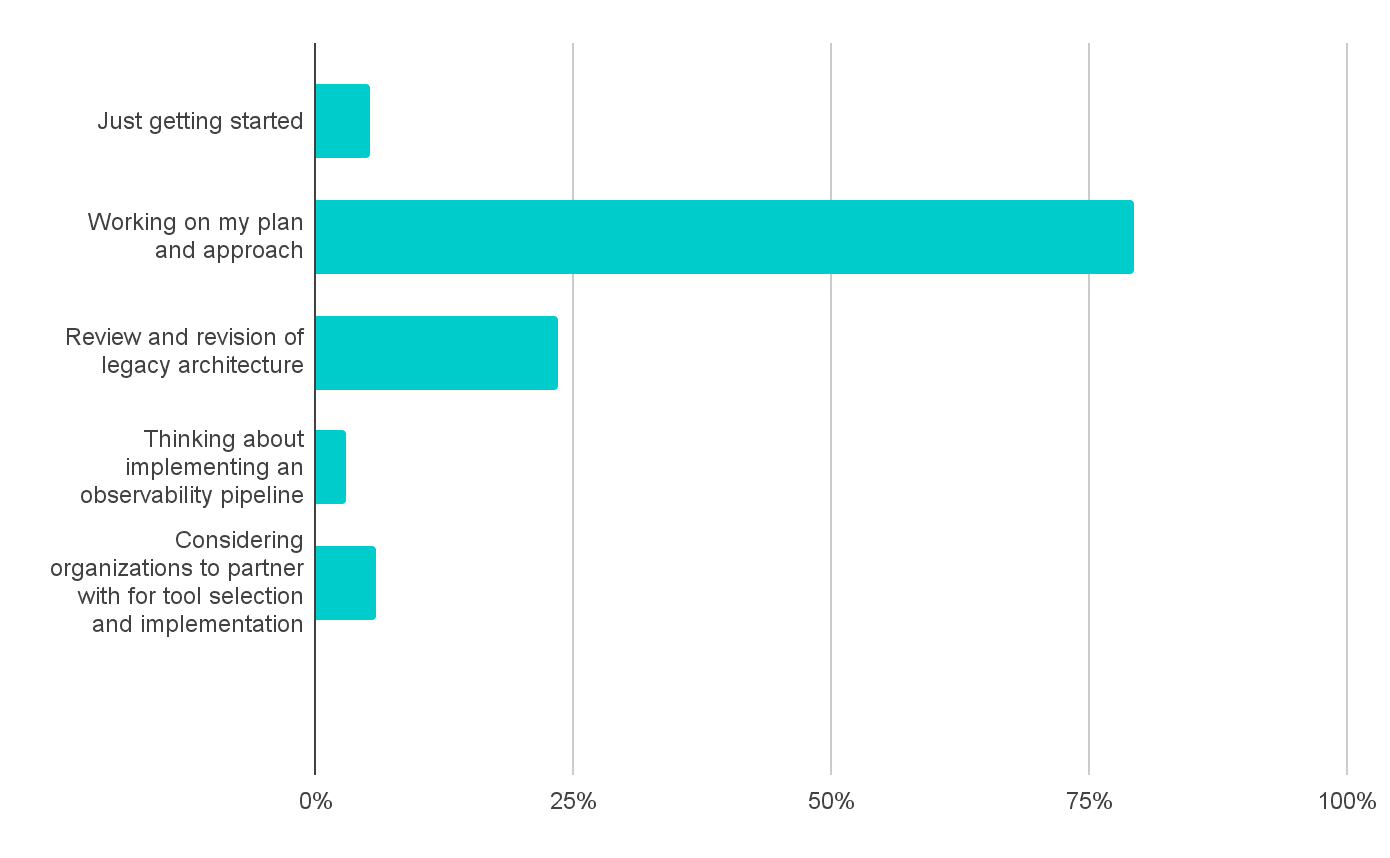
While 79% of attendees were working on their architecture plan and approach, only 3% already had an observability pipeline on their radar.
As the data landscape continues to change and legacy architectures struggle to meet business objectives, I think we’ll see much more adoption for an observability pipeline than these numbers show.
If you’re interested in checking out our vendor-agnostic observability pipeline, Cribl Stream, you can learn more by exploring our sandboxes, trying out Stream Cloud, or joining the community. We have over 3,000 community members that can help answer questions and get you started.
